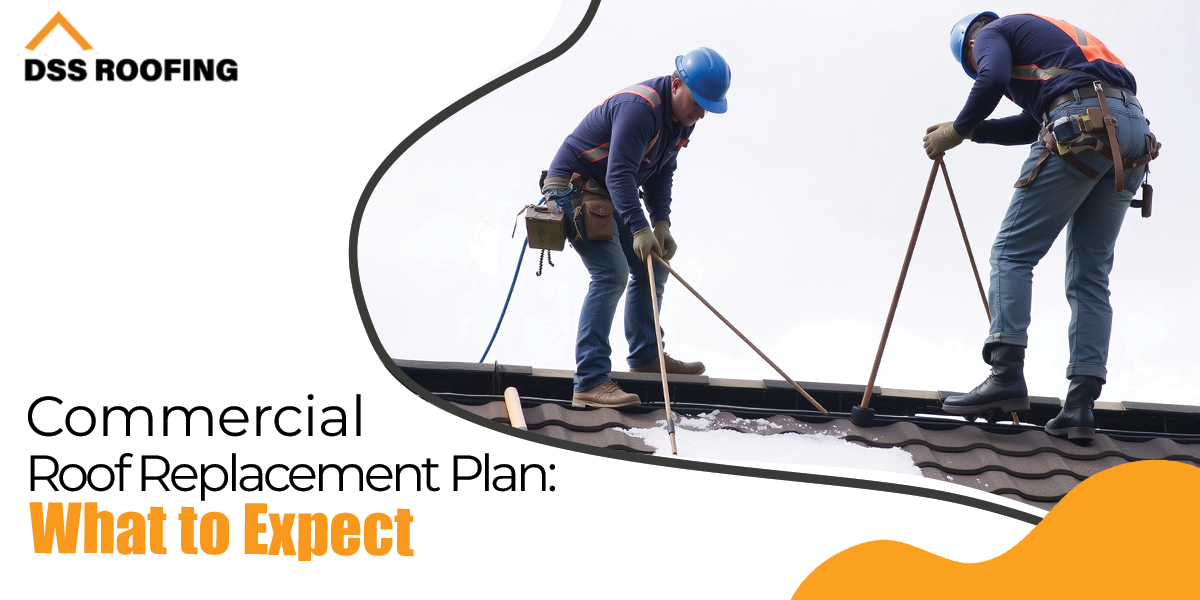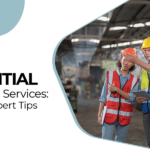Commercial Roof Replacement Plan: What to Expect
A commercial roof is a significant investment, and when it comes time for a replacement, business owners must be well-prepared. A well-executed commercial roof replacement in Buffalo ensures the longevity of your building, enhances energy efficiency, and protects assets from environmental damage. But what exactly should you expect during the process of commercial roof replacement services?
This guide walks you through the essential steps of a commercial roof replacement plan, from initial assessment to post-installation maintenance.
Steps Involved in a Commercial Roof Replacement
The essential steps are as follows:-
1. Initial Roof Inspection and Assessment
Before committing to a roof replacement, a professional inspection is necessary. A roofing contractor will evaluate the current roof condition, checking for issues like leaks, structural weaknesses, ponding water, insulation problems, and material deterioration. Further, this assessment helps determine whether a replacement is needed or if repairs might suffice.
Key Steps in the Inspection Process:
- Structural Analysis – Checking load-bearing capacity and roof stability.
- Leak Detection – Identifying areas with water infiltration.
- Material Assessment – Evaluating existing roofing materials and their lifespan.
- Code Compliance Review – Ensuring the roof meets local building regulations.
2. Planning and Budgeting While Commercial Roof Replacement
Once the need for replacement is confirmed, planning begins. This involves setting a budget, selecting materials, and determining the project timeline. Moreover, factors that influence costs include roof size, material choice, labor, permits, and disposal fees.
Key Considerations for Budgeting:
- Type of roofing material (TPO, EPDM, PVC, metal, etc.)
- Labor costs and contractor fees
- Permit costs and compliance expenses
- Additional insulation or structural reinforcements
- Waste removal and cleanup
3. Choosing the Right Roofing Material
Selecting the appropriate roofing material depends on your building type, climate, and budget. Popular commercial roofing options include:
- TPO (Thermoplastic Olefin) – Energy-efficient, lightweight, and durable.
- EPDM (Ethylene Propylene Diene Monomer) – Affordable and resistant to UV damage.
- PVC (Polyvinyl Chloride) – Highly durable and resistant to chemicals.
- Metal Roofing – Long lifespan with excellent durability.
- Built-Up Roofing (BUR) – Traditional, multi-layer protection.
So, each material has its pros and cons, so consulting with a roofing expert is advised to make the best decision.
4. Obtaining Permits and Meeting Compliance Standards
Commercial roofing projects typically require permits. Contractors will handle the permit applications and ensure the project meets local codes, safety standards, and environmental regulations. Further, failing to secure proper permits can result in fines or project delays.
5. Scheduling the Project and Preparing the Site
Commercial roof replacement Buffalo ny can disrupt business operations, so scheduling should be planned accordingly. Also, many businesses opt for weekend or off-peak hours to minimize interruptions.
Pre-Installation Steps:
- Notifying employees, tenants, or customers about the project timeline.
- Protecting valuable equipment inside the building.
- Ensuring proper access for roofing contractors and equipment.
- Arranging temporary workspaces if necessary.
6. Removing the Old Roof and Preparing the Surface
The first step in installation is removing the existing roofing material. This can be a noisy and messy process, but it’s essential for ensuring a strong foundation for the new roof. Moreover, after removal, the surface is cleaned, repaired, and primed.
Common Issues Addressed During Removal:
- Rotting or weakened decking
- Mold or mildew buildup
- Insulation upgrades
- Structural reinforcements
7. Installing the New Roofing System
Once the surface is prepared, the new roofing material is installed. The installation process varies based on the type of roofing system. Furthermore, some roofs require adhesives, mechanical fasteners, or heat-welding techniques to ensure a secure fit.
Installation Phases:
- Applying insulation layers for thermal efficiency.
- Installing the primary roofing membrane.
- Sealing seams and joints to prevent leaks.
- Adding drainage systems to prevent water pooling.
- Then, installing flashing and protective coatings.
8. Final Inspection and Quality Assurance
After installation, a thorough inspection ensures that the roof is properly installed and meets industry standards. Also, contractors will check for potential weak points, test for leaks, and ensure all components are securely in place.
9. Cleanup and Waste Disposal
A reputable roofing company will manage cleanup and debris removal. Eventually, leaving the site in good condition. This includes:
- Disposing of old roofing materials responsibly.
- Cleaning up nails, screws, and excess materials.
- Restoring areas affected by construction.
10. Post-Installation Maintenance and Warranty
To maximize the lifespan of your new roof, ongoing maintenance is crucial. Most roofing systems come with warranties ranging from 10 to 30 years, depending on the material and contractor.
Maintenance Tips:
- Make time for at least two roof inspections every year.
- Clean gutters and drainage systems to prevent clogs.
- Address minor repairs promptly to prevent major issues.
- Also, monitor for signs of wear, such as cracks, leaks, or ponding water.
Signs Your Commercial Roof Needs Replacement
Here are some key signs and factors that indicate it’s time for a commercial roof replacement services:-
1. Age of the Roof
The material of the roof plays a crucial role in the lifespan of a commercial roof:
- TPO & EPDM: 20-30 years
- PVC: 20-35 years
- Metal Roofing: 40+ years
- Asphalt-Based Roofing: 20-25 years
Replace your roof if your roof is about to or has exceeded its expected lifespan.
2. Persistent Leaks and Water Damage
Frequent leaks and water stains on ceilings and walls indicate underlying roofing problems. If repairs no longer stop leaks, the damage may be extensive, requiring a complete replacement.
3. Visible Roof Damage
Cracks, blistering, and bubbling on the surface can indicate severe deterioration. Additionally, sagging areas or ponding water that doesn’t drain within 48 hours can compromise structural integrity, signaling the need for replacement.
4. Increased Energy Bills
A failing roof loses its insulating properties, causing HVAC systems to work harder to maintain indoor temperatures. Additionally, if energy costs have spiked without changes in usage, your roof may no longer be energy-efficient.
5. Mold and Mildew Growth
If you notice mold or mildew inside your building, especially near ceilings and walls, excess moisture may be seeping through the roof. Unchecked mold can cause health hazards and structural issues.
6. Extensive Roofing Repairs
If you find yourself constantly repairing your roof, a full replacement might be more cost-effective in the long run. Frequent patch-ups are temporary fixes that add up over time, while a new roof offers long-term savings.
7. Compliance with Building Codes
Older roofs may not meet updated building codes and regulations. If your roof fails inspections or is no longer compliant, replacing it with a modern, code-compliant solution is necessary.
Final Thoughts
A commercial roof replacement is a complex but necessary investment for long-term property protection. By understanding the process, business owners can ensure a smooth and successful roofing project. So, whether you’re upgrading for efficiency, durability, or compliance, a well-structured replacement plan will provide peace of mind and lasting benefits.
DSS Roofing specializes in commercial roof replacement services, ensuring durable, high-quality roofing solutions for businesses. With expert craftsmanship and premium materials, we provide reliable replacements to enhance protection and efficiency. So, trust DSS Roofing for seamless services. Contact us today!



